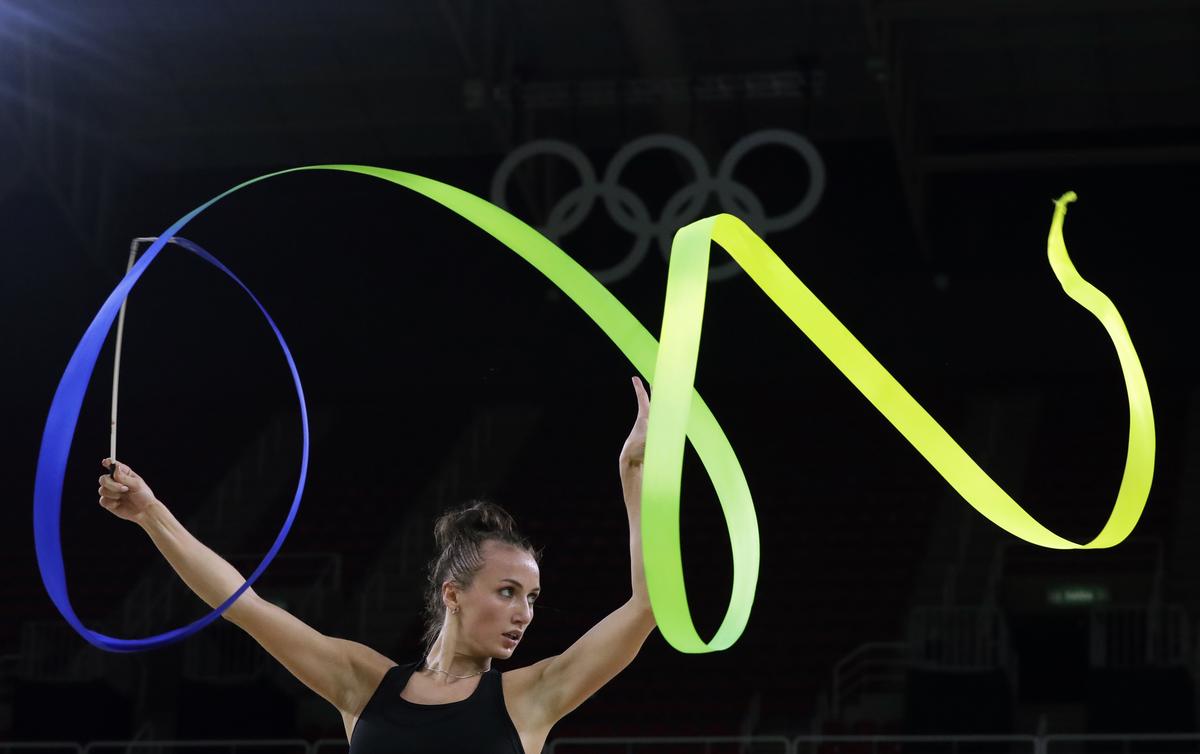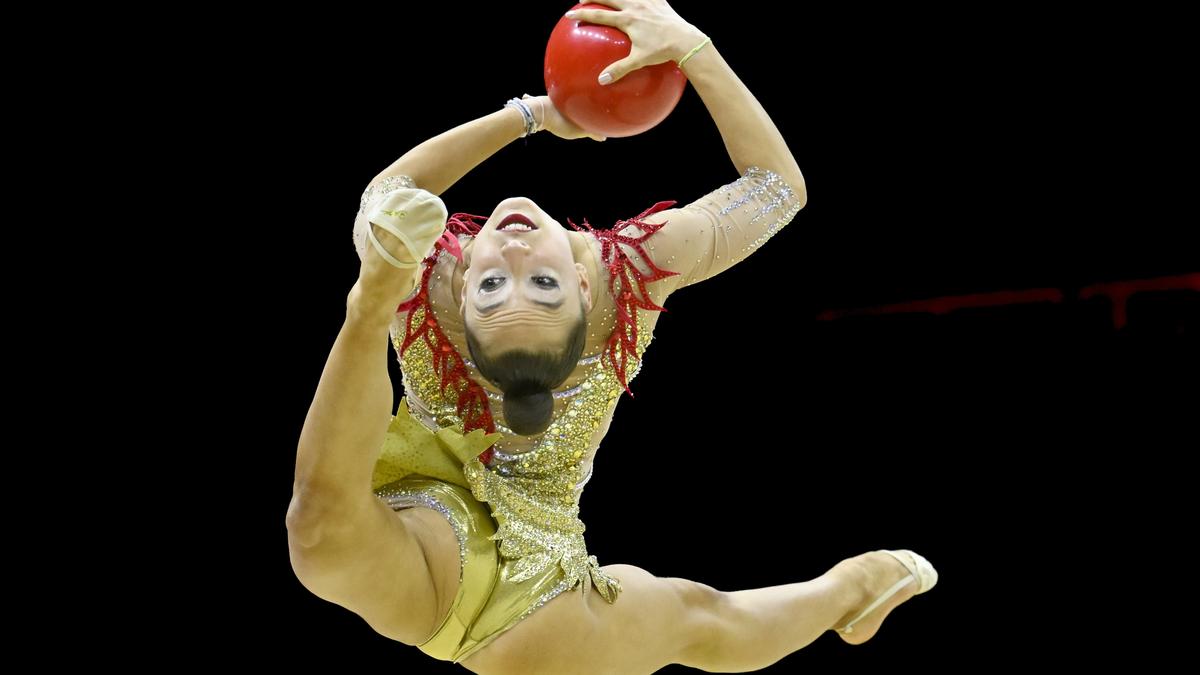Olympics: Why is rhythmic gymnastics predominantly a women-only sport?
While rhythmic gymnastics was formalized as a competitive sport in the mid-20th century, the increased interest in female athletes further solidified its reputation as a women’s sport.
Here are some reasons for rhythmic gymnastics predominantly being a women-only sport.
Historical Development
Rhythmic gymnastics evolved from combining ballet, gymnastics, and dance, disciplines that have traditionally emphasized feminine grace and artistry. When rhythmic gymnastics was formalized as a competitive sport in the mid-20th century, it naturally attracted more female participants.
Cultural Associations
The sport places a strong emphasis on flexibility, grace, and aesthetic presentation, traits that have culturally been associated with femininity. This cultural perception has influenced both the development of the sport and its participant base.

FILE – Ukraine’s Ganna Rizatdinova practices her routine a day ahead of the rhythmic gymnastics individual all-around qualifications at the 2016 Summer Olympics.
| Photo Credit:
AP
FILE – Ukraine’s Ganna Rizatdinova practices her routine a day ahead of the rhythmic gymnastics individual all-around qualifications at the 2016 Summer Olympics.
| Photo Credit:
AP
Organizational structures
Governing bodies like the International Gymnastics Federation (FIG) have historically promoted rhythmic gymnastics as a women’s sport. This institutional support has reinforced the sport’s gender-specific nature.
Media and popularity
Media coverage and public interest have predominantly focused on female athletes in rhythmic gymnastics, further solidifying its reputation as a women’s sport.
Competitions and opportunities
Competitions, including the Olympics, have women’s events. The absence of equivalent men’s events at such high-profile competitions limits opportunities and incentives for men to participate in rhythmic gymnastics. Although rhythmic gymnastics is mainly a women’s sport, some men participate, especially in countries like Japan and Spain, where men’s rhythmic gymnastics has a following. However, it is not as widespread or internationally recognized as the women’s discipline.



